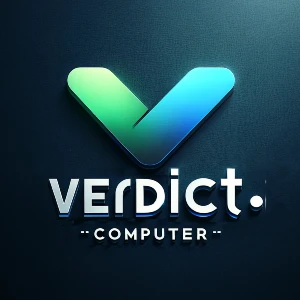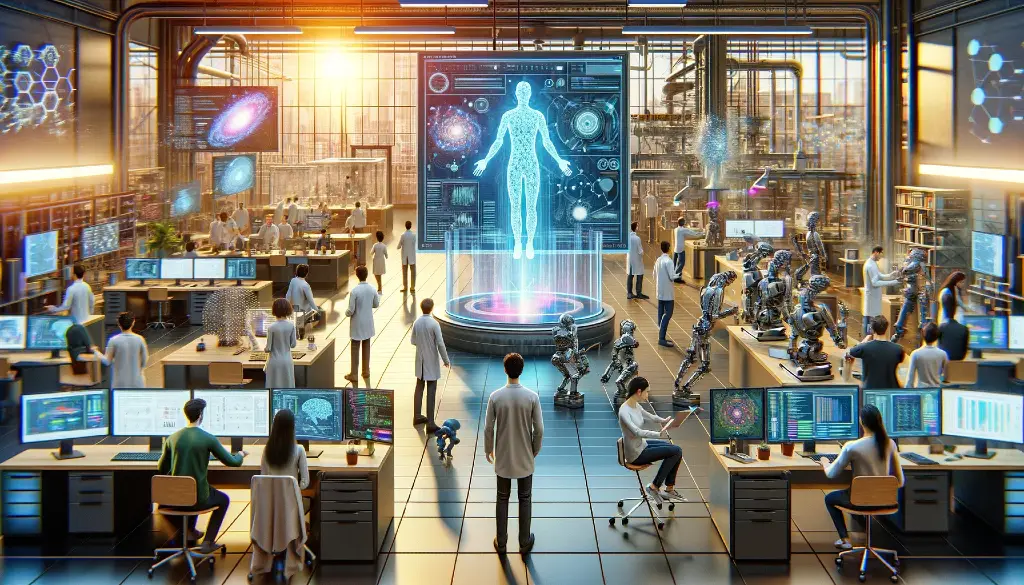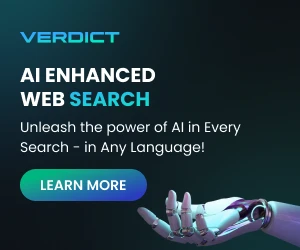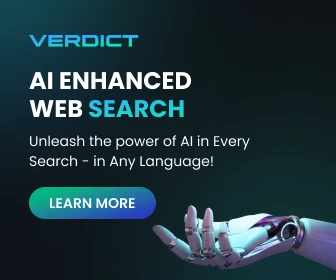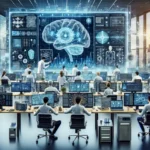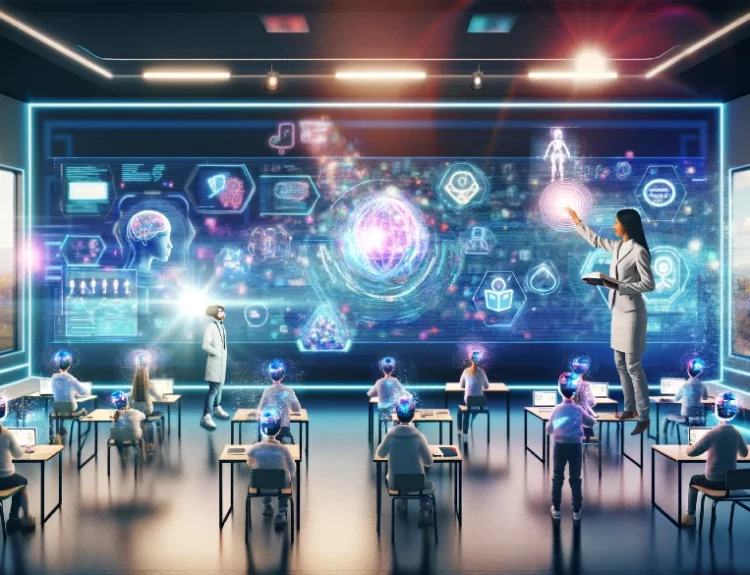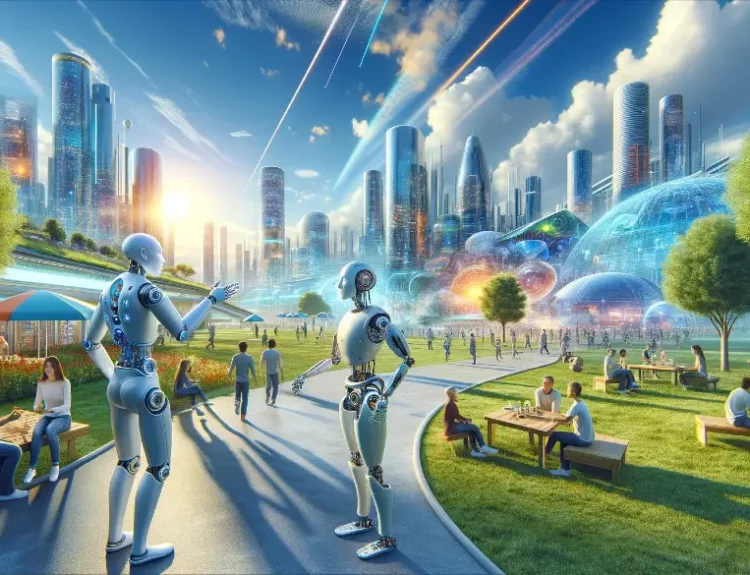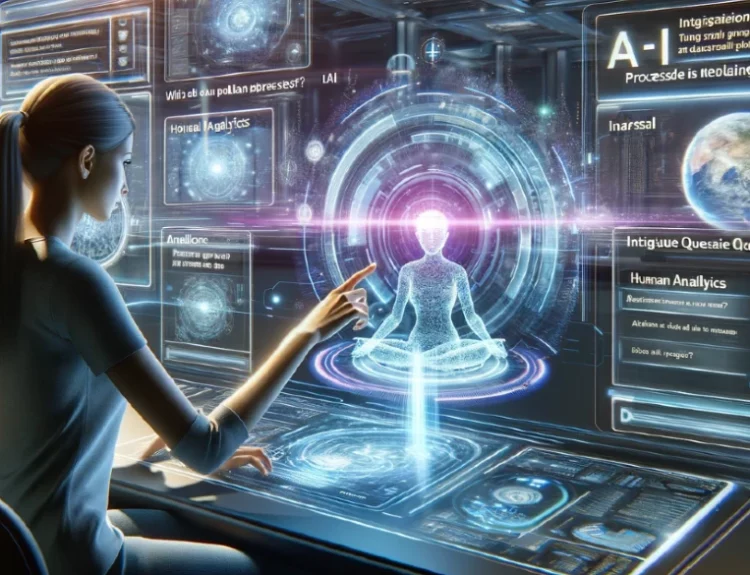In the rapidly evolving landscape of technology, two fields stand at the forefront, shaping the very fabric of our digital future: artificial intelligence (AI) and computer science. Imagine a world where machines not only process data but comprehend, learn, and make decisions akin to human intelligence. This is the realm of AI, a realm where the boundaries between fiction and reality blur with each passing breakthrough.
But what exactly is the relationship between AI and computer science? Are they merely two sides of the same coin, or do they share a deeper connection that transcends traditional boundaries? Join us on a journey as we delve into the intricate interplay between these two disciplines, uncovering the synergies that fuel innovation and drive progress in the digital age.
From the dawn of computing to the latest advancements in machine learning and beyond, we’ll explore the symbiotic relationship between AI and computer science.
Buckle up as we embark on a quest to unravel the mysteries of AI and navigate the ever-expanding frontier of computer science. Get ready to embark on an exhilarating adventure where the past, present, and future converge in a whirlwind of discovery and innovation. Welcome to the exploration of the relationship between AI and computer science—where the journey is just as thrilling as the destination.
Understanding AI and Computer Science
In the vast landscape of technological innovation, two pillars stand tall: artificial intelligence (AI) and computer science. To grasp the intricacies of their relationship, it’s imperative to first understand the fundamental principles that underpin each discipline.
Definition of AI
Artificial intelligence, often abbreviated as AI, represents the pinnacle of human ingenuity in the realm of technology. At its core, AI seeks to imbue machines with the ability to perceive, reason, and act autonomously—mirroring the cognitive capabilities of the human mind. From self-driving cars to virtual assistants, AI manifests in myriad forms, each pushing the boundaries of what machines can accomplish.
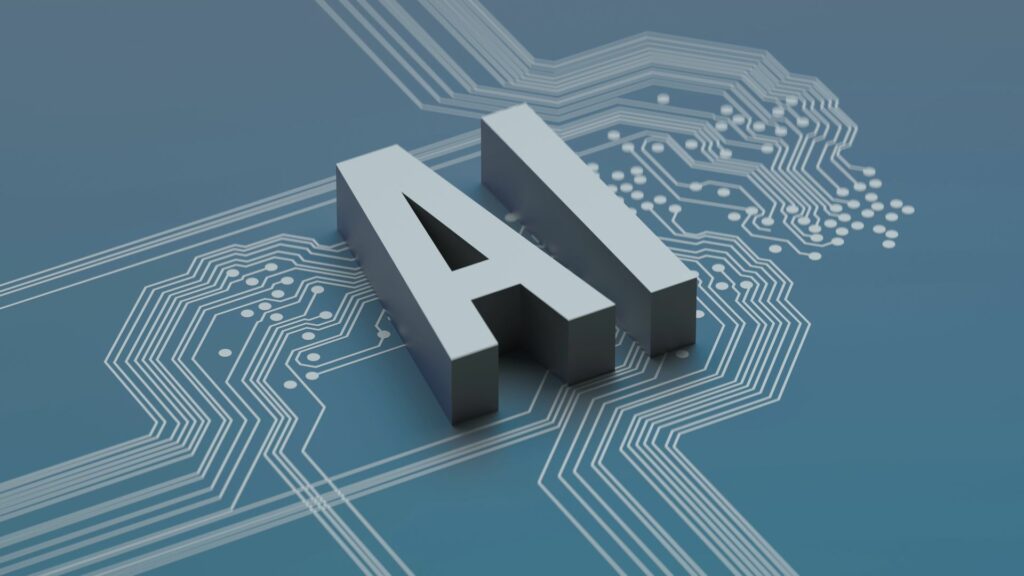
Definition of Computer Science
On the other hand, computer science serves as the bedrock upon which AI flourishes. Defined as the study of algorithms, data structures, and computational systems, computer science encompasses a broad spectrum of disciplines, ranging from software engineering to theoretical computer science. It’s through the lens of computer science that we gain insights into the inner workings of AI, unlocking the algorithms and methodologies that power intelligent behavior.
Exploring the Intersection
While AI and computer science may appear distinct on the surface, they are inextricably intertwined—each complementing and enriching the other in a symbiotic relationship. Computer science provides the theoretical framework and computational tools necessary to realize the ambitious goals of AI, while AI, in turn, catalyzes innovation within the field of computer science, driving forward the frontiers of knowledge and possibility.
By understanding the foundations of AI and computer science, we lay the groundwork for a deeper exploration of their relationship—a relationship that transcends disciplinary boundaries and holds the key to unlocking the full potential of intelligent machines.
The Evolution
The historical evolution of AI and computer science is a captivating journey marked by seminal breakthroughs and transformative innovations. From the conceptualization of early AI theories to the development of sophisticated computing systems, the trajectory of both disciplines intertwines, each milestone paving the way for the next.
As pioneers and visionaries push the boundaries of what’s possible, we witness the evolution of AI and computer science from lofty aspirations to tangible realities, shaping the course of technological progress for generations to come.
Future of AI
Looking ahead, the future of AI and computer science brims with promise and potential, poised to redefine the very fabric of our existence. Emerging technologies such as machine learning, deep learning, and neural networks hold the key to unlocking new frontiers of innovation, enabling machines to learn, adapt, and evolve in ways previously unimaginable.
As researchers and innovators push the boundaries of what’s possible, we stand on the cusp of a new era—one where intelligent machines coexist harmoniously with humanity, augmenting our capabilities and reshaping the way we live, work, and interact with the world around us. With each passing day, we inch closer to a future where the lines between science fiction and reality blur, ushering in a new era of possibility and potential.
Implications
As AI and computer science continue to advance at a rapid pace, it’s crucial to pause and consider the implications and challenges that accompany this unprecedented progress. On one hand, the integration of AI into various facets of society holds the promise of revolutionizing industries, enhancing efficiency, and improving quality of life. However, this transformative potential also brings with it a host of ethical, societal, and regulatory challenges.
From concerns surrounding data privacy and algorithmic bias to the potential displacement of jobs and the ethical implications of autonomous decision-making, navigating the complex landscape of AI and computer science requires careful consideration and foresight. By addressing these challenges head-on and fostering open dialogue and collaboration, we can ensure that the benefits of AI and computer science are maximized while mitigating potential risks, ultimately guiding us toward a future that is equitable, inclusive, and sustainable.
About Verdict
Amidst the dynamic landscape of AI and computer science, Verdict emerges as a beacon of innovation and community-driven progress. At Verdict, we’re not just building another AI platform—we’re shaping the future of artificial intelligence through collective wisdom and real-world interactions. With each search, chat, and shared result, our platform evolves, learning from the diverse experiences and insights of our global community.
Verdict is more than just a tool—it’s a testament to the power of collaboration and shared knowledge. By harnessing the collective intelligence of our users, we’re not only creating smarter algorithms but also fostering a deeper understanding of the world around us. Whether you’re a seasoned researcher, a curious enthusiast, or simply someone eager to explore the frontiers of AI, Verdict offers a platform for you to engage, learn, and contribute to the ongoing evolution of artificial intelligence.
Join us on this collective journey toward a future where AI reflects the diversity of human experience, learns from our collective wisdom, and grows alongside us.
Conclusion
In the vast expanse of technology, the relationship between AI and computer science emerges as a cornerstone of innovation, driving forward the frontiers of human knowledge and capability. As we’ve explored the intertwined nature of these disciplines—from their historical evolution to their future implications—it’s evident that their synergy holds the key to unlocking new possibilities and shaping the course of our digital future.
As we stand at the precipice of a new era of technological advancement, it’s essential to recognize the profound impact of AI and computer science on society, industry, and beyond. While the journey ahead may be fraught with challenges and uncertainties, it’s also brimming with promise and potential. By fostering collaboration, dialogue, and responsible innovation, we can harness the transformative power of AI and computer science to create a future that is equitable, inclusive, and sustainable.
In closing, let us embrace the opportunities that lie before us, united in our quest to explore the boundless possibilities of AI and computer science. Together, we can chart a course toward a future where intelligence knows no bounds and where the synergy between humans and machines paves the way for a brighter tomorrow. Thank you for joining us on this journey of discovery, and may our collective efforts continue to shape the ever-evolving landscape of technology for generations to come.
